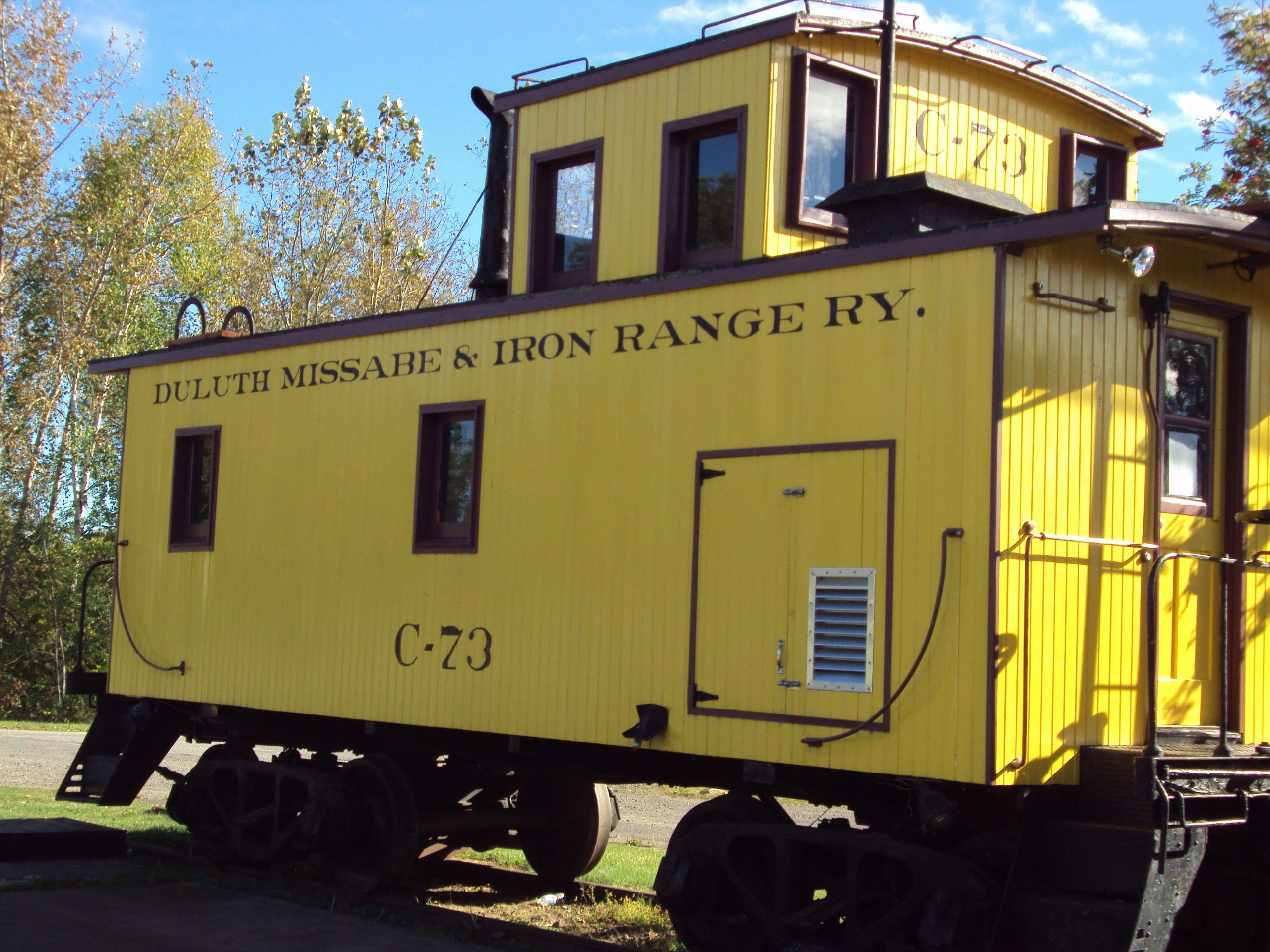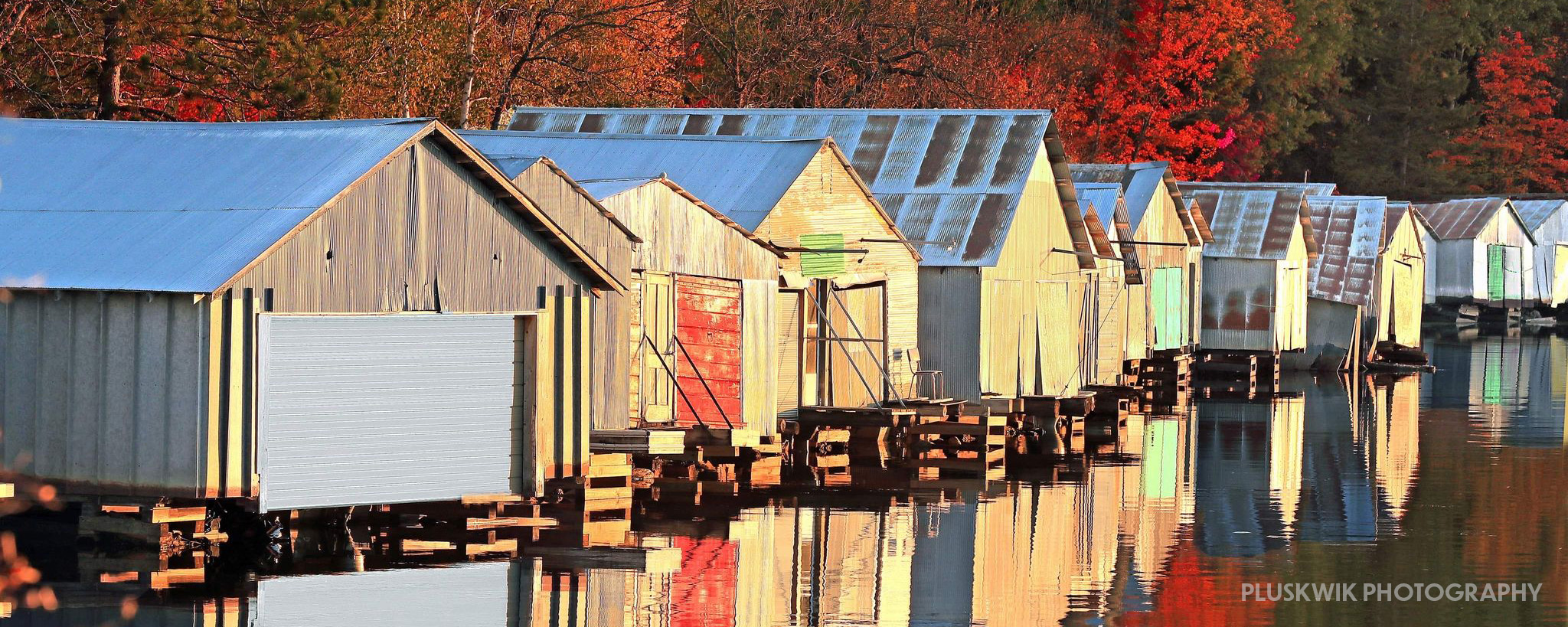Caboose #73
The train cars at the Tower Train Depot Museum and City Park all tell the story of railroad life of the past. Of all the train cars, the caboose is one of the most popular attractions. “Kids of all ages” love Caboose #73 and the special stories it tells.
In 1899 train rules were renumbered and as a result Rule 399 became Rule 99; in brief, the Rule of 99 is Beware of Slack Action. This safety rule became the mandate for the presence of cabooses on trains. The caboose was home base for the work crew whose job it was to ensure the safety of everyone who rode the rails. The caboose had its own diesel generator which ran the air compressor and the electric lights. The caboose was also equipped with a stove for heat and cooking, an ice box, a bread box and a toilet. The crew would eat their lunches and take breaks in the caboose.
The Duluth Missabe and Iron Range Railroad (DM&IR) Caboose #73 was built in the early 1900s. It was a working caboose. On most railroad trains, a “working caboose” was often hooked on the back of the train behind the main caboose and carried crews of 6-10 men called the “caboose crew”.
Every 3-4 miles along the main rail line would be a spur (side track) where the work caboose could be unhooked. The crew would unhook the caboose from the train and “park” it on the spur. They would then repair the tracks, cut down trees that were growing too close to the rails and bury the occasional moose that had been hit by the train. Rain storms would occasionally wash away the road bed, another important task of the caboose crew.
The most common kind of caboose is like Caboose #73, a” cupola caboose”. The invention of the cupola is generally attributed to T.B. Watson, a freight conductor on the Chicago and North Western Railway. In 1898 he wrote “During the ‘60s I was a conductor on the C&NW. One day late in the summer of 1863 I received orders to give my caboose to the conductor of a construction train and take an empty boxcar to use as a caboose. This car happened to have a hole in the roof about 2 feet square. I stacked the lamp and tool boxes under the end and sat with my head and shoulders above the roof. Later I suggested putting a box around the hole with glass in it, so I could have a pilot house to sit in and watch the train.”
The Conductor and the Brakeman would sit up in the cupola and check for problems such as shifting loads, broken or dragging equipment and “hot boxes”. Hot boxes were a major disaster for rolling trains. Before the mid-20th century, axel bearings were housed in a box that used oil-soaked rags or cotton to reduce friction to the train axel. The friction would raise the temperature to a point that, if neglected, could cause a fire or weaken the axle so it could fracture and cause a derailment. The train crew, especially the men riding in the caboose, were on the lookout for smoke or flames. If the workers saw “red” or smoke, there would be an emergency stop to prevent further damage.
Caboose #73 originally came from Ely where it was retired from the DM&IR Railway in the 1960s. Dot Fagelberg, a railroad buff, was the first owner of the caboose. She had it delivered during the winter, by road, to Aronson’s Boat Works on Pike Bay, Lake Vermilion, and then by ice ¼ mile to her property on Pike Bay Drive. Transporting the caboose across the ice was the only way it could be delivered to her desired location which was parallel to the shoreline. There it rested for 40-plus years where caboose was used as a guest cottage.
When John R. Jacobsen and Hollaye Plerchee purchased the Fagleberg property on Pike Bay Drive around 2000, they donated Caboose #73 to the City of Tower. In 2001, the City hired professional movers to transport the body of the caboose to the Tower Train Depot Museum and City Park. In order to do so, they separated the caboose body from the wheels on a 6-wheel drive house moving truck. Breitung Township’s loader was used behind the truck in case it slipped backwards, which it did at one time during the move. Workers ran alongside the truck, throwing blocks behind the wheels to prevent slipping. At one point, workers had to scurry on top of the caboose to untangle it from tree branches.
In the summer of 2008, Tower-Soudan Historical Society (TSHS) members and community volunteers decided to begin the task of restoring the caboose. Windows were replaced or repaired. Sheet metal patches and rotted wooden car siding were removed, insulation was applied and new cedar car siding was attached and primed and painted. The doors were stripped, sanded and then stained and varnished or primed and painted. A DM&IR generator was purchased and the storage area cleaned, repainted and a new door constructed.
In September of 2016, because the exterior was severely faded, stained, and the old windows peeling, TSHS members decided that it was time to repaint the caboose. After light sanding and cleaning, the DM&IR colors, gold and burgundy, were renewed. In 2022 the exterior of the caboose was refreshed with sanding and painting by dedicated TSHS volunteers.
The TSHS is committed to maintaining the car in good condition for the public, an ongoing effort by TSHS volunteers. Professional services and repairs are paid for by grants which are matched with community members’ donations. In this way, one of our community’s treasures is preserved for the many “kids of all ages” who come to see Caboose #73.

